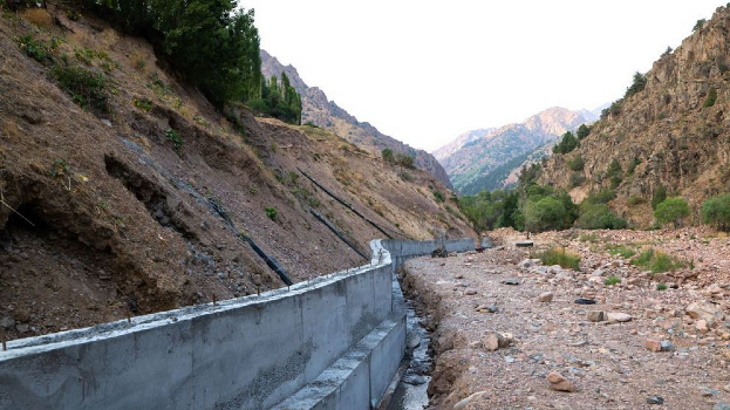
The grant funds will support work to close the identified mine openings, demolish derelict facilities that were used for uranium ore processing, and to re-cultivate selected waste rock areas at the Yangiabad and Charkesar mines.
Located at an altitude of 1300 metres in an area with a high risk of seismic activity, and around 70km from Tashkent, Yangiabad was a uranium mining site for nearly 40 years. The largest uranium mining legacy site in Uzbekistan, it is spread across a 50-square-kilometre area and contains about 2.6 million cubic metres of radioactive waste. Planned remediation works include closing four shafts, demolishing contaminated buildings and processing facilities, relocating several waste rock dumps to a central covered dump and other associated activities.
The village of Charkesar, located in the mountains 140km to the east of the Uzbek capital, was a uranium mining site until 1995 and is still home to approximately 3500 people. Planned remediation works at this site include the closure of two shafts and the demolition of abandoned buildings.
"Uranium site remediation efforts are critical initiatives aimed at addressing the environmental and public health risks associated with past uranium mining, processing, and disposal activities," said Charlotte Adriaen, the EU Ambassador to the Republic of Uzbekistan. "These efforts involve the clean-up and restoration of contaminated sites to reduce the spread of radioactive materials, prevent further environmental degradation, and protect nearby communities.
"We are happy to support Uzbekistan on this important challenge and it is good to see the high commitment to advance the works. By implementing comprehensive remediation strategies, we can mitigate the long-term impacts of uranium contamination, promote sustainable land use, and ensure a safer and healthier future for both the environment and local communities."
Central Asia served as an important source of uranium for the former Soviet Union. Uranium was mined for over 50 years and uranium ore was also imported from other countries for processing, and large amounts of radioactively contaminated material were placed in mining waste dumps and tailing sites. Most of the mines were closed by 1995 but very little remediation was done before or after the closure of the mining and milling operations. The contaminated material is a threat to the environment and the health of the population. The hazards include the possible pollution of ground and surface water in a key agricultural centre of the region.
The EBRD established the ERA in 2015 at the request of the European Commission, to tackle the legacy of Soviet uranium mining in the region. The account, which became operational in 2016, is supported by contributions from the European Commission, Belgium, Lithuania, Norway, Spain, Switzerland and the USA.
The ERA has now allocated funding to remediate five out of seven high priority sites in Central Asia (three of which are in Kyrgyzstan and two in Uzbekistan).
Researched and written by World Nuclear News